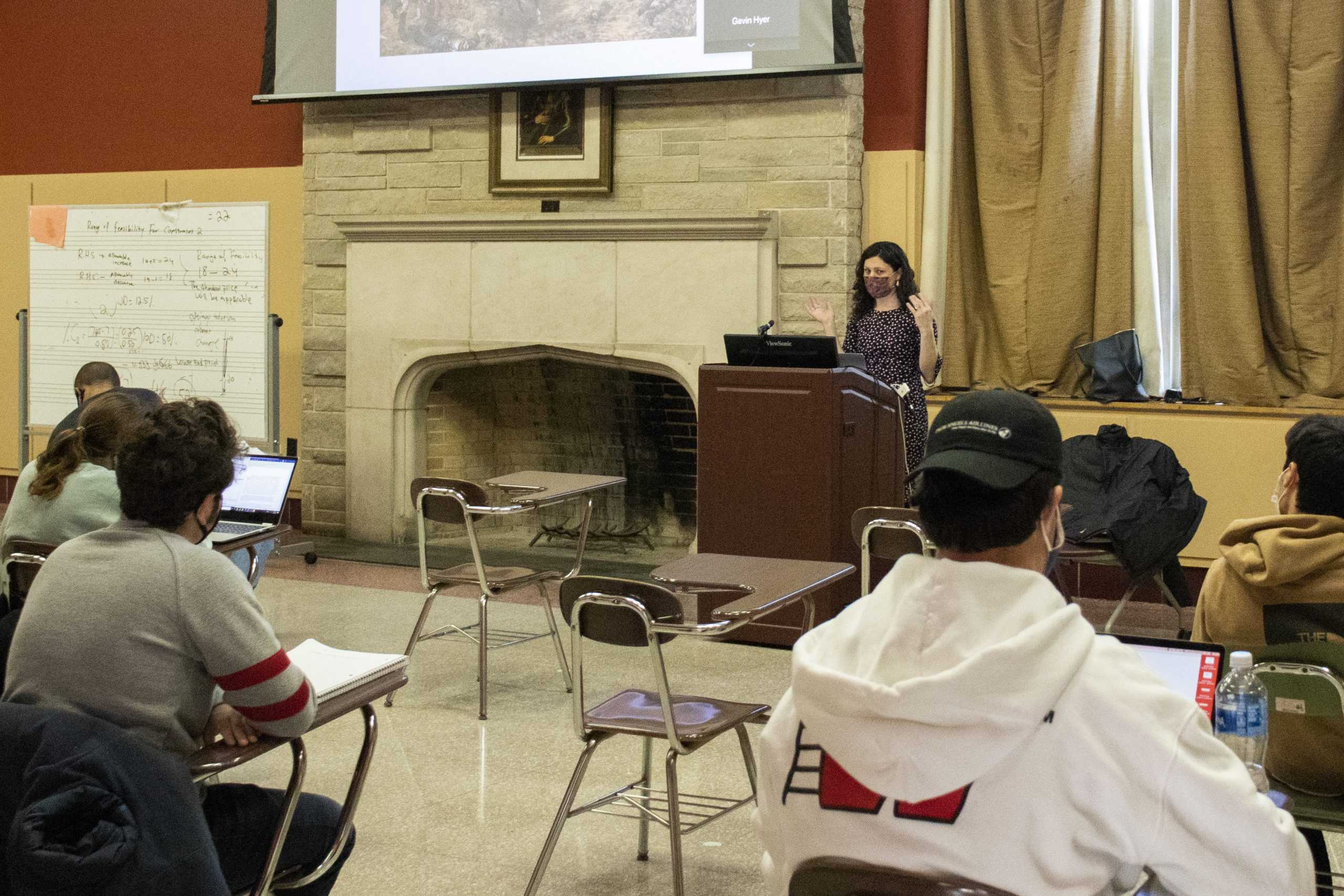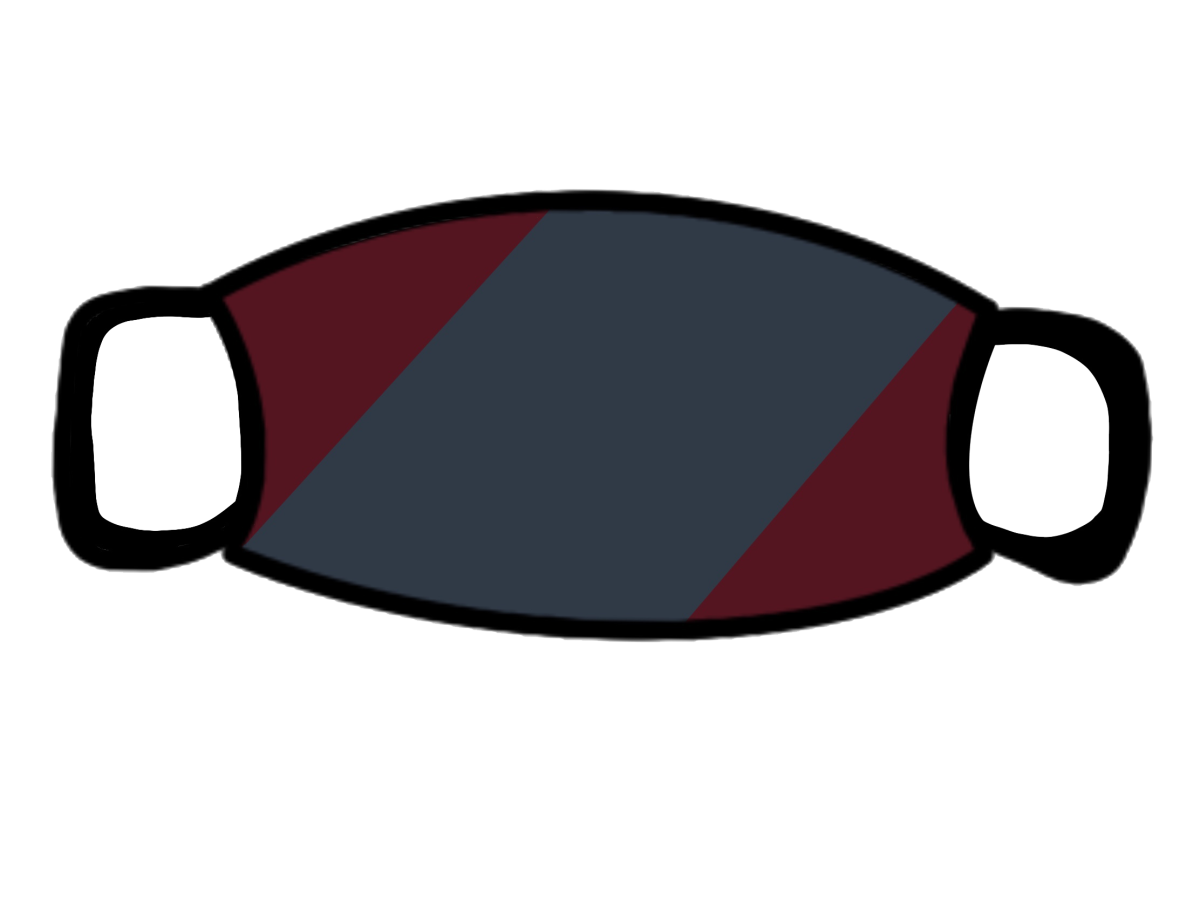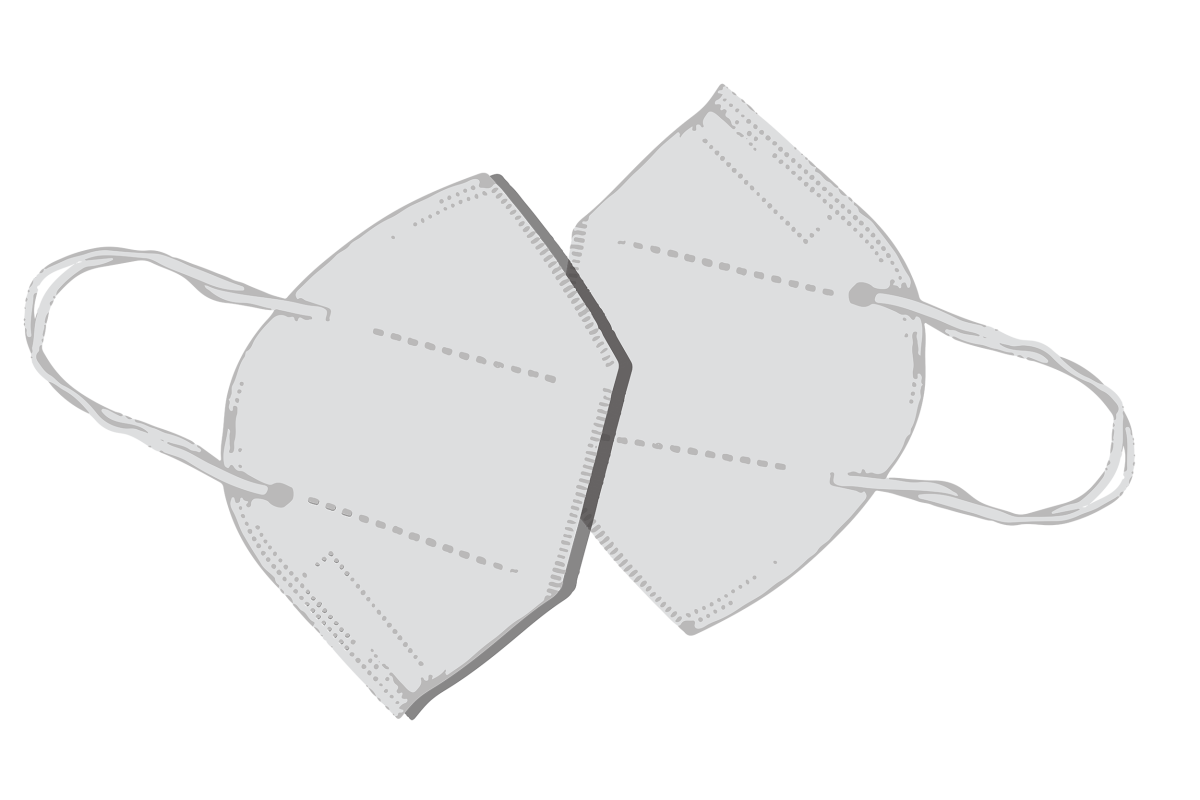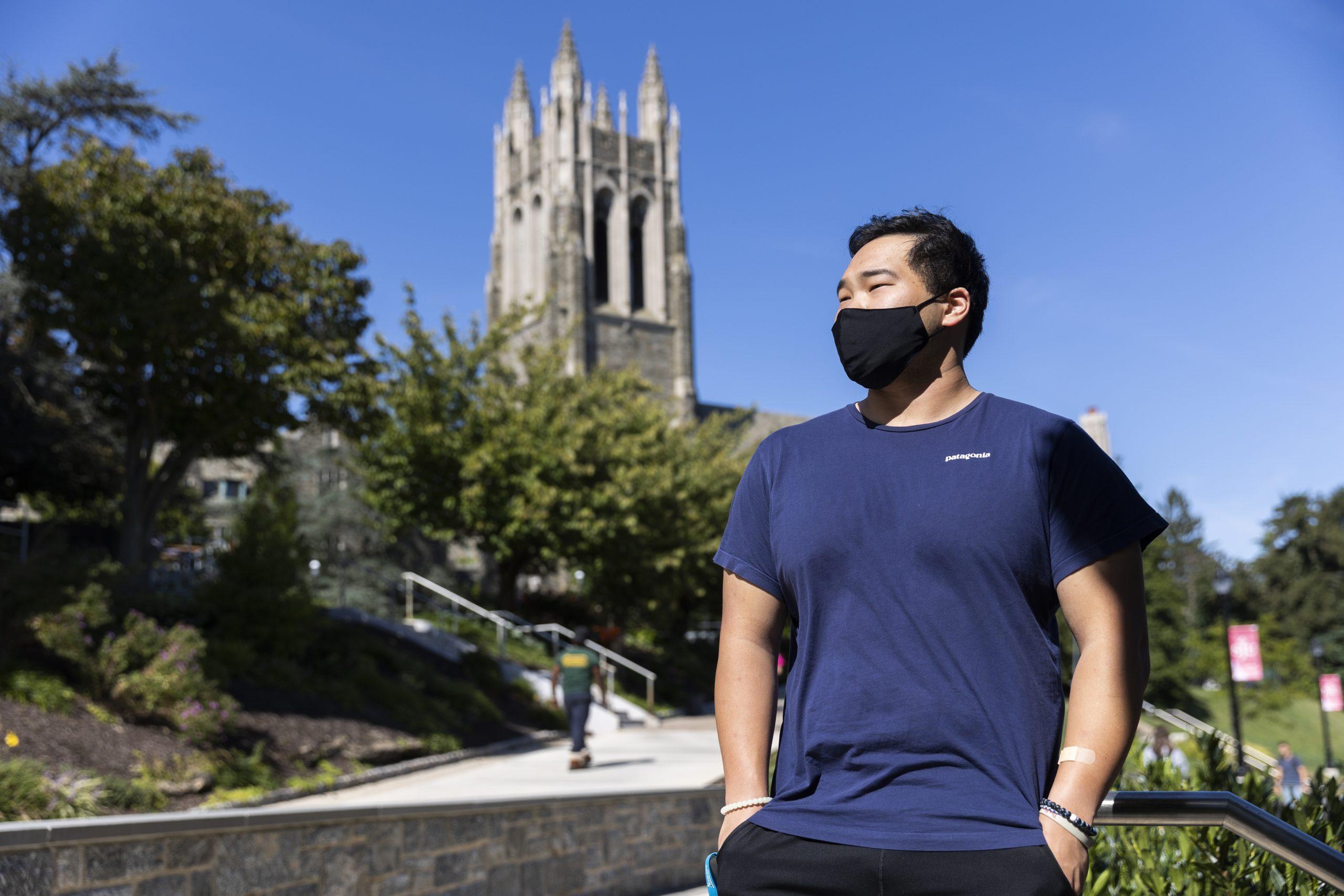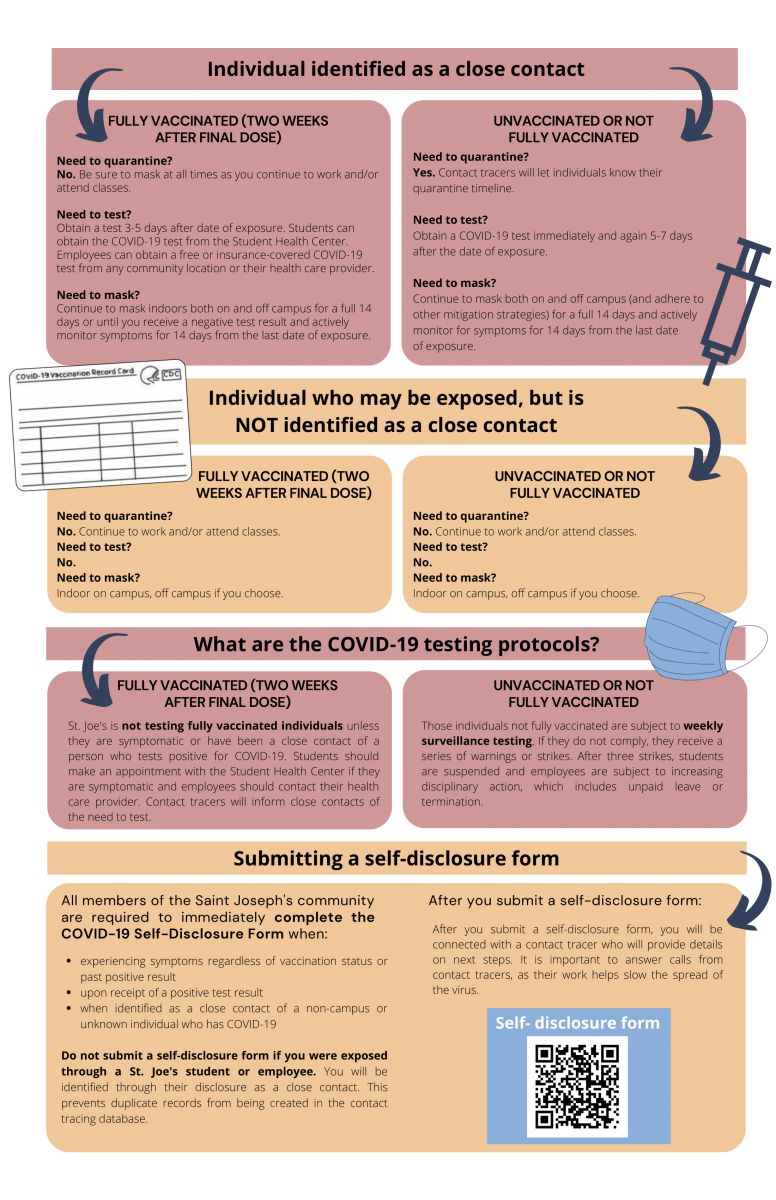Once a week Audrey Cole ’22 heads to Boland Hall for what has become a rarity at St. Joe’s amid the coronavirus pandemic: an in-person class.
Cole’s class, Darkroom Photography, is the only one out of her five classes this spring that is face to face. She and nine other students in the course are split into two groups, one group attending on Tuesday and one on Thursday. Cole said while social distancing and mask requirements make it difficult to take photos, she is happy to not be fully online.
“It’s not completely normal, but it does feel better because at least I can go see people and have some sort of interaction for the week,” Cole said.
That is how CJ Donofry ’22 said he feels about his two fully face-to-face courses. Donofry said he struggles to stay focused in his online classes, but in person he pays better attention.
“Mentally, you don’t even realize it, but you can just get caught up in a fog when you are just inside,” Donofry said. “Having in-person classes means there’s a reason to go to campus. It works wonders, mentally, to feel better, even regardless of classes, getting up and getting out.”
Last fall, 17% of all classes at St. Joe’s were what the university designated as face to face, as reported in the Sept. 2 issue of The Hawk. This spring approximately 19% of all classes are face to face, according to Gabrielle Lacherza, public relations manager. The rest are a combination of online, hyflex and hybrid. Online classes do not meet in person. Hybrid classes include a combination of in-person and online meetings. Hyflex classes allow some students to be in person and some to be online.
The university granted permission to teach online to professors who provided documentation that they or their family members were at higher risk for contracting COVID-19. Other professors teach in a hybrid or hyflex model, in part because of classroom space considerations. And some professors like Catherine Hughes, Ph.D., visiting assistant professor of music, theatre and film, are able to teach on campus.
Hughes, who is teaching four music classes in person this semester, said she loves being on campus to teach and doing so offers a sense of normalcy.
But Hughes acknowledged it is a privilege for her to be able to make this choice.
“I don’t have children at home, and I’m not taking care of my parents,” Hughes said. “So, I had the freedom to say ‘Yes, I want to be back in person.’”
Elizabeth Morgan, Ph.D., associate professor of music, theatre and film, said she was grateful to return to in-person teaching in the fall after juggling online classes and caring for two small children at home last spring when the university shifted to fully virtual instruction.
“From the perspective of my own mental health, when September rolled around and I got to put on heels and adult clothes to go to campus and interact with other humans, I was happy, and it was nice to do it,” Morgan said.
This semester, Morgan is teaching in-studio piano lessons in person and two sections of Music History in a hybrid format.
Morgan said modalities that offer a mixture of face-to-face and online learning can be challenging.
“I think it’s hard for faculty in general when we have students who are Zooming in and we have face-to-face students,” Morgan said. “We’ve lost all our spontaneity, and I have to stand straight in front of a computer [during class].”
Some of Morgan’s students are online because they are in quarantine and isolation, and that has been the reality for many professors who teach in-person classes. It can be rare for an entire class to be in person at any point in the semester given the number of students quarantining or isolating.
As her students have moved in and out of quarantine and isolation throughout the semester, Catalina Arango Pinedo, Ph.D., associate professor of biology, said she has had trouble adjusting to what she calls a “revolving door” and making sure students get the accommodations they need.
“It’s like juggling a million things in the air,” Arango Pinedo said. “It is difficult when you’re juggling the technology and the people in the classroom.”
Tisha Douglas, M.Ed., adjunct professor of teacher education, is also teaching in person this semester. Douglas said she likes to put students into groups and walk around the room engaging in conversations but with physical-distancing requirements and other COVID-19 restrictions, that is not possible. Masks can also be a barrier, she said.
“‘Please be patient with me to get to know you because I don’t really know what you look like behind the mask,’” Douglas said she told her students in the beginning of the semester. “‘It might take longer to get to know your name than it would if we didn’t have to mask.’”
Hughes said she has similarly struggled with small group discussions in person, perhaps even more so than on Zoom where she can put students into breakout rooms.
“Small group discussion in a COVID classroom can be really difficult because you guys are so far apart and you have to yell at each other,” Hughes said. “That is definitely a challenge, and I think I do a little bit less of that in class now just because yelling six feet away to the next student isn’t the most productive.”
Looking toward the fall 2021 semester, Cole said she hopes for more face-to-face classes.
“After a year of this, I need my normalness back,” Cole said. “I hope they’re going to offer more hybrid or in-person classes, and a lot less online.”
Whether that happens will likely depend on vaccine availability for faculty whose access to vaccines thus far has been inconsistent, as reported in in the March 24 issue of The Hawk. Arango Pinedo said she is “willing to do one more semester of this” if that means keeping everyone safe until the majority of the campus is vaccinated.
As for Hughes, she plans to teach in person again in the fall if that remains possible.
“Just having that interaction with students in person in real time is so valuable to me that as long as I can teach in person or in a hyflex setting, that’s what I’ll choose,” Hughes said.













































